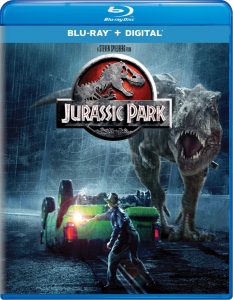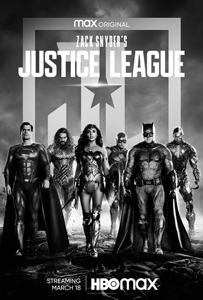As with “Superman II,” we now have two versions of “Justice League.” But in this case, the differences are much vaster; in fact, the 2017 Joss Whedon-helmed version and the new Zack Snyder-directed version (HBO Max) are almost polar opposites. The most notable metric is that the original version is 2 hours long and “Zack Snyder’s Justice League” is 4 hours long.
Almost like a miniseries
Indeed, the Justice League fully forms after the 2-hour mark of Snyder’s cut. The epic scope provided by the length is largely a benefit. I feel like the six-member Justice League has solidly formed, that they’ve stopped a serious global threat, and that the citizenry is better off going forward with these protectors looking over humanity.
Because of the flashback to the Age of Heroes (part two of the six parts), we get a historic perspective: Heroes defeated these same baddies long ago, but the movie’s present day is a time of disunity, when the Earth is vulnerable to Steppenwolf (voiced by Ciaran Hinds, and with improved – though still obvious — CGI).
“Zack Snyder’s Justice League” (2021)
Director: Zack Snyder
Writers: Chris Terrio (story, screenplay); Zack Snyder, Will Beall (story)
Stars: Henry Cavill, Ben Affleck, Gal Gadot
Deeper characters
Steppenwolf and Victor Stone/Cyborg (Ray Fisher) most benefit from the Snyder cut. Steppenwolf is one of those big (in size, strength and goals) villains that I kind of feel sorry for, because I know Superman (Henry Cavill), et al., will defeat him in the end. (I also feel bad that he never gets to enter the frame to “Born to Be Wild.”) Steppenwolf’s alien-tech holographic chats with DeSaad (voiced by Peter Guinness) ring of Darth Vader and the Emperor in “The Empire Strikes Back.”
But DeSaad is merely a middleman; the top alien is Darkseid (voiced by Ray Porter). The goals of these villains are simple but huge: Darkseid wants to rule and shape the galaxy, and Steppenwolf wants to please his masters. Simplicity combined with scope sums up the Snyder cut in general. The story is never complex (not on purpose, anyway), but everything is grand.
It reminds me of “The Fellowship of the Ring,” a movie I disliked for being long but not having many surprises or delights. I like “Zack Snyder’s Justice League” more, because I like Wonder Woman (Gal Gadot). … Oh, and I also like Batman (Ben Affleck), Superman, Aquaman (Jason Momoa), The Flash (Ezra Miller) and Cyborg. The personalities and camaraderie are also the reason I had fun with the 2017 “Justice League” (while also acknowledging its problems).
Cyborg’s backstory is (you’ll notice a theme here) basic: His scientist dad (Joe Morton) didn’t spend enough time with him when he was a kid. But Fisher has presence. He channels that tragic half-human, half-robot fable found in “RoboCop” and other classics.

Comic-book homework
I’m glad we have the Snyder cut, but – outside of the “It’s so cool that it exists!” context — it’s awkward in its pacing and where it puts its focus, and it’s morose as often as it’s fun. Really, we’re talking about superhero comic-book homework. That’s a pretty cool type of homework, true, but Snyder – who pens the story with Chris Terrio (the screenwriter) and Will Beall — doesn’t follow tried-and-true principles, such as the notion that a three-act structure is most appealing to viewers.
There is a story within “Zack Snyder’s Justice League,” but the bulk of the 4 hours is taken up by backstory, world building, arty CGI fight scenes where the outcome is obvious, cameos by DC characters who aren’t relevant to this narrative, and an alternate-future dream.
As noted, the League isn’t formed until after the halfway mark. Also by the midpoint, Steppenwolf has only acquired two of the three Mother Boxes, and he hasn’t even learned of yet another artifact on Earth that could gain him bigger favor with his bosses.
There’s no way this film would be appealing to someone just dipping into the superhero genre; it’s for geeks and insiders, purposefully indulgent and worshipful of DC lore. It certainly has character moments, especially for Steppenwolf and Cyborg, and to a lesser extent for The Flash, plus the pseudo-poignant stuff with the resurrected Superman, Lois (Amy Adams) and Martha Kent (Diane Lane).
(To give an idea of how packed and unfocused this film is, Superman’s return feels relegated to one of many bullet points, rather than being the central theme, as in the 2017 cut.)
Artistic imagery
Those character moments are outnumbered by instances of imagery so artistic I felt I should replace the black plastic panels around my screen with a gilded frame – a slowed-down shot of Wonder Woman flipping over Steppenwolf in battle; or The Flash moving so fast that he appears still to us, with lightning zipping past him in the other direction; or Supes gliding into space Magneto-style, eclipsing the sun. Snyder’s cut is a CGI comic-book tone poem.
I can understand why, in 2017, the studio decided to pare “Justice League” down to the core story, emphasizing action and Whedonian quips. That gag of Aquaman being truthful, then a pan-out to see he is sitting on Wonder Woman’s Lasso of Truth, is absent here. Some humor remains (Batman’s superpower is still that he’s rich), but it’s spaced out enough to avoid impacting the high-minded grandeur.
While the studio’s instinct to do a 2-hour Whedon cut made sense, there’s a hollowness to character arcs in that short version – especially for Steppenwolf and Cyborg. The new version almost goes too far in the other direction, flirting with being overwrought. But given the two choices, I prefer the completeness of the arcs in Snyder’s version; that’s a no-brainer.
Still, while the Snyder cut is loaded with treats – including a newly shot epilog with cameos and references – I wouldn’t recommend it to anyone who isn’t already all in on this stuff. Those folks know who they are and don’t need the nod from me.
A passion project
The Snyder cut is a passionate project with lots of positives. But of course it can’t correct the wider (and widely acknowledged) DCEU missteps such as jumping into team-ups before establishing backstories. (Yes, we know Batman’s and The Flash’s backstories from elsewhere, but the absence of those backstories nonetheless makes them shallower characters on this timeline.)
Ever since being introduced to the middle-aged Batman in “Batman v Superman: Dawn of Justice” – a film that also introduces Wonder Woman without giving us her backstory — there’s a sense that we’re just seeing a slice of the full story.
Also, a one-to-one comparison shows that the Marvel Cinematic Universe’s combining of movie and TV stories in one timeline is more appealing than DC’s decision to have the movies and TV series (mostly on The CW) be separate timelines. How cool would it be if TV’s Flash (from “The Flash”) and Cyborg (from “Doom Patrol”) smoothly moved into the films?
And Batman’s DCEU backstory could’ve been the Nolanverse films, except that the DCEU wanted to bring the Joker back to life. But for what? The extent of Batman-vs.-Joker action is a brief clash in “Suicide Squad” and an ephemeral sequence here.
But I digress. “Zack Snyder’s Justice League” is the proper version of this movie, what it needs to be to provide scope and weight and an anchor point for the DC Extended Universe. Watching it is equal parts work and play, but I’m glad I got the chance to do so – and I’ll happily do so again if there’s ever a “David Ayer’s Suicide Squad.”
IMDb Top 250 trivia
- “Zack Snyder’s Justice League” ranks No. 137 with an 8.3 rating a week into its release. It will likely fall with time, but it’s nonetheless a strong statement that fans support directors’ visions over studios’. It’ll be interesting to see how this effects future decisions.
- The original cut of “Justice League” rates a 6.2, and no other DCEU films crack the Top 250.

